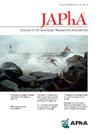Time to goal hemoglobin A1c with pharmacist management compared with nonpharmacist management
IF 2.5
4区 医学
Q3 PHARMACOLOGY & PHARMACY
Journal of the American Pharmacists Association
Pub Date : 2025-05-06
DOI:10.1016/j.japh.2025.102413
引用次数: 0
Abstract
Background
Although there is robust literature showing pharmacist success reducing hemoglobin A1c% (A1c), studies evaluating the impact of pharmacists on time to goal A1c are lacking. This study aimed to assess the difference in time to achieve diabetes control with pharmacist management compared with nonpharmacist management.
Objectives
The primary objective was average time to achieve goal A1c with pharmacist management compared with nonpharmacist management. Secondary objectives included the rate of achieving goal A1c, mean A1c reduction, rate of hospitalization and emergency department visits, and the use of guideline-directed therapy in eligible patients (appropriateness of angiotensin-converting enzyme inhibitors or angiotensin II receptor blockers and statin or proprotein convertase subtilisin/kexin type 9 inhibitor use).
Methods
This was a retrospective, single-center chart review of adult patients followed by primary care providers at a large academic health system. Patients with a referral to a pharmacist for diabetes management (pharmacist group) were compared with patients managed without pharmacist involvement (nonpharmacist group). Those in the nonpharmacist group received support from the chronic care management team, which included a primary care provider, a diabetes educator, a dietitian, and a nurse who assists with medication adherence.
Results
Of the 355 patients evaluated, 238 were included with 189 patients in the pharmacist group and 49 patients in the nonpharmacist group. Time to achieve goal A1c occurred sooner in patients managed by the pharmacist than the nonpharmacist group (8.8 ± 5.3 months vs. 22.5 ± 13.0 months, respectively, P = 0.001).
Conclusion
Pharmacist management of diabetes resulted in patients achieving their goal A1c approximately 14 months faster than those who did not receive pharmacist support. However, the results of the study do not take into consideration different comorbidities, length of disease, and specific medication classes used, which may have potentially affected the results.
与非药师管理相比,药师管理下糖化血红蛋白达到目标的时间。
背景:虽然有大量文献显示药剂师成功降低血红蛋白A1c% (A1c),但评估药剂师对按时达到目标A1c影响的研究缺乏。本研究的目的是评估药师管理与非药师管理在实现糖尿病控制时间上的差异。目的:主要目的是与非药师管理相比,药师管理下达到目标A1c的平均时间。次要目标包括A1c目标达到率、平均A1c降低率、住院率和急诊就诊率,以及在符合条件的患者中使用指南指导治疗(血管紧张素转换酶抑制剂(ACEi)/血管紧张素II受体阻滞剂(ARB)和他汀类/蛋白转化酶枯草杆菌素/ keexin 9型抑制剂(PCSK9i)的适宜性)。方法:这是一个回顾性的,单中心图表回顾成年患者跟随初级保健提供者在一个大型学术卫生系统。将转介给药剂师进行糖尿病管理的患者(药剂师组)与没有药剂师参与管理的患者(非药剂师组)进行比较。非药剂师组的患者得到了慢性护理管理小组的支持,该小组包括一名初级保健提供者、糖尿病教育者、一名营养师和一名协助坚持服药的护士。结果:共纳入355例患者238例,其中药师组189例,非药师组49例。与非药剂师组相比,由药剂师管理的患者实现目标A1c的时间更快(分别为8.8+ 5.3个月和22.5 + 13.0个月,p=0.001)。结论:与未接受药师支持的患者相比,药师管理糖尿病患者实现A1c目标的时间大约快14个月。然而,该研究的结果并没有考虑到不同的合并症、疾病的持续时间和使用的特定药物类别,这些可能会对结果产生潜在的影响。
本文章由计算机程序翻译,如有差异,请以英文原文为准。
求助全文
约1分钟内获得全文
求助全文
来源期刊
CiteScore
3.30
自引率
14.30%
发文量
336
审稿时长
46 days
期刊介绍:
The Journal of the American Pharmacists Association is the official peer-reviewed journal of the American Pharmacists Association (APhA), providing information on pharmaceutical care, drug therapy, diseases and other health issues, trends in pharmacy practice and therapeutics, informed opinion, and original research. JAPhA publishes original research, reviews, experiences, and opinion articles that link science to contemporary pharmacy practice to improve patient care.

 求助内容:
求助内容: 应助结果提醒方式:
应助结果提醒方式:


